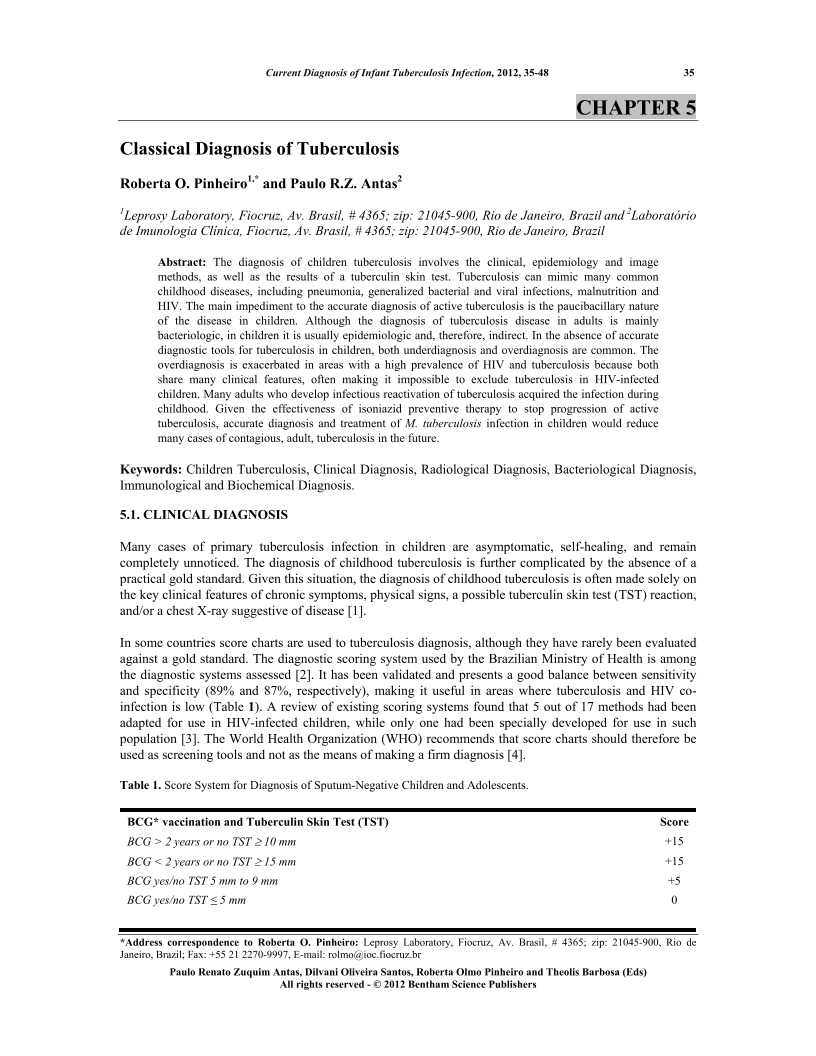Classical Diagnosis of Tuberculosis

- Authors: Roberta O. Pinheiro1, Paulo R.Z. Antas2
-
View Affiliations Hide Affiliations1 Leprosy Laboratory, Fiocruz, Av. Brasil, # 4365; zip: 21045 900, Rio de Janeiro, Brazil 2 Laboratório de Imunologia Clínica, Fiocruz, Av. Brasil, # 4365; zip: 21045-900, Rio de Janeiro, Brazil
- Source: Current Diagnosis of Infant Tuberculosis Infection , pp 35-48
- Publication Date: March 2012
- Language: English
Classical Diagnosis of Tuberculosis, Page 1 of 1
< Previous page | Next page > /docserver/preview/fulltext/9781608053025/chapter-5-1.gif
The diagnosis of children tuberculosis involves the clinical, epidemiology and image methods, as well as the results of a tuberculin skin test. Tuberculosis can mimic many common childhood diseases, including pneumonia, generalized bacterial and viral infections, malnutrition and HIV. The main impediment to the accurate diagnosis of active tuberculosis is the paucibacillary nature of the disease in children. Although the diagnosis of tuberculosis disease in adults is mainly bacteriologic, in children it is usually epidemiologic and, therefore, indirect. In the absence of accurate diagnostic tools for tuberculosis in children, both underdiagnosis and overdiagnosis are common. The overdiagnosis is exacerbated in areas with a high prevalence of HIV and tuberculosis because both share many clinical features, often making it impossible to exclude tuberculosis in HIV-infected children. Many adults who develop infectious reactivation of tuberculosis acquired the infection during childhood. Given the effectiveness of isoniazid preventive therapy to stop progression of active tuberculosis, accurate diagnosis and treatment of M. tuberculosis infection in children would reduce many cases of contagious, adult, tuberculosis in the future.
-
From This Site
/content/books/9781608053025.chapter-5dcterms_subject,pub_keyword-contentType:Journal -contentType:Figure -contentType:Table -contentType:SupplementaryData105

